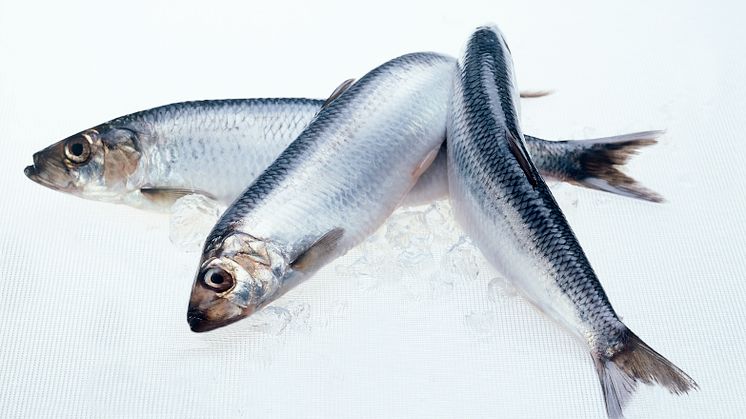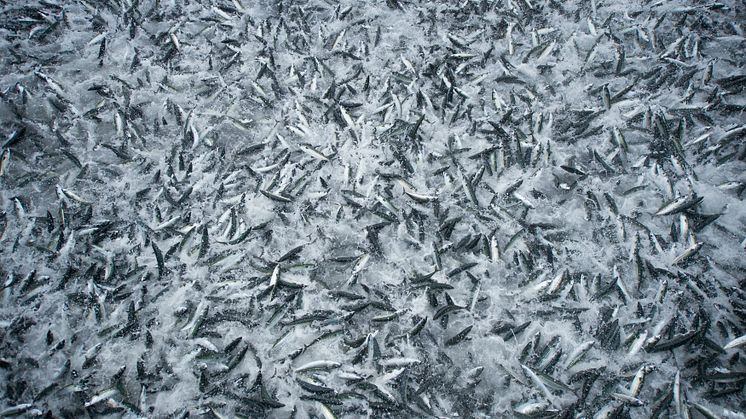
Press release -
Norwegian pelagic exports reduced in October
Norway exported herring, mackerel and other pelagic fish to a value of NOK 1.5 billion in October. This represents a decrease of NOK 208 million, or 12 per cent, compared with October 2014. Year to date, exports of herring, mackerel and other pelagic fish from Norway totalled NOK 5.3 billion. This is a decrease of 8 per cent compared with the same period in 2014.
Norway has exported herring worth NOK 1.6 billion so far this year. This marks a decrease of 13 per cent compared with the same period last year. So far this year Norway´s mackerel exports have totalled NOK 2.9 billion, a decrease of 12 per cent compared with the same period in 2014. The Netherlands is the largest market for pelagic fish, followed by Japan and China.
“Reduced quotas have meant that export volumes have fallen, but this was partly offset by higher prices in October. Market access challenges in key pelagic markets such as China, Nigeria and Russia have in general affected exports in 2015”, said Paul Aandahl, Analyst with the Norwegian Seafood Council.
Herring exports were worth NOK 173 million in October. This is an increase of 39 per cent compared to October 2014. Mackerel exports fell by 17 per cent to NOK 1.3 billion in October.
Japan is the largest export market for Norwegian mackerel
Export volumes of mackerel have totalled 264,000 tonnes so far this year. This represents a reduction of 14 per cent compared with the same period last year. The largest export markets for mackerel have been Japan, the Netherlands and China. Mackerel is sent to China for processing, and then to the consumer market in Japan. The average price of frozen whole mackerel so far this year is NOK 10.62 per kg. This is an increase of 3 per cent on the same period last year.
In October, Norway exported 121,000 tonnes of frozen whole mackerel. This is a year-on-year decline of 21 per cent. The largest volumes of frozen whole mackerel went to Japan, China and the Netherlands.
Mackerel fillets show strong export growth
Exports of mackerel fillet stood in October at 732 tonnes, an increase of 72 per cent compared to October 2014. So far this year, exports have increased by 86 per cent to 5,000 tonnes. The principal export markets for mackerel fillets are Sweden, South Korea and Japan.
Ukraine is the largest export market for Norwegian herring
Frozen whole herring exports totalled 72,000 tonnes so far this year. This is 37 per cent down on the same period last year. Ukraine, the Netherlands and Lithuania have been the biggest export markets during this period. The average price of frozen whole herring so far this year is NOK 8.62 per kg. This is an increase of 22 per cent from the corresponding period in 2014.
In October, exports of frozen whole herring reached 7,000 tonnes. This represents a decline of 29 per cent from October 2014. The largest export markets by volume for frozen whole herring have been Lithuania and Kazakhstan.
Year to date exports of frozen herring fillets have totalled 53,000 tonnes. A decline of 25 per cent compared with the same period last year. The largest markets by volume were Poland, Germany and Lithuania. The average price of frozen herring fillet products year-to-date is NOK 13 per kg. This is an increase of 18 per cent compared with the same period last year.
In October, frozen herring fillet exports totalled 6,000 tonnes. This is a decline of 67 per cent compared with October 2014. The largest volumes went to Poland and Germany.
Topics
Categories
The Norwegian Seafood Council works with the Norwegian fisheries and aquaculture industries to develop markets for Norwegian seafood through local market intelligence, market development and reputational risk management. The Seafood Council is headquartered in Tromsø and maintains local representatives in twelve of Norway's most important international markets. The Norwegian seafood industry finances the activities of the Norwegian Seafood Council via a tariff on all Norwegian seafood exports.
The Norwegian Seafood Council is a public company owned by the Ministry of Trade, Industry and Fisheries.


